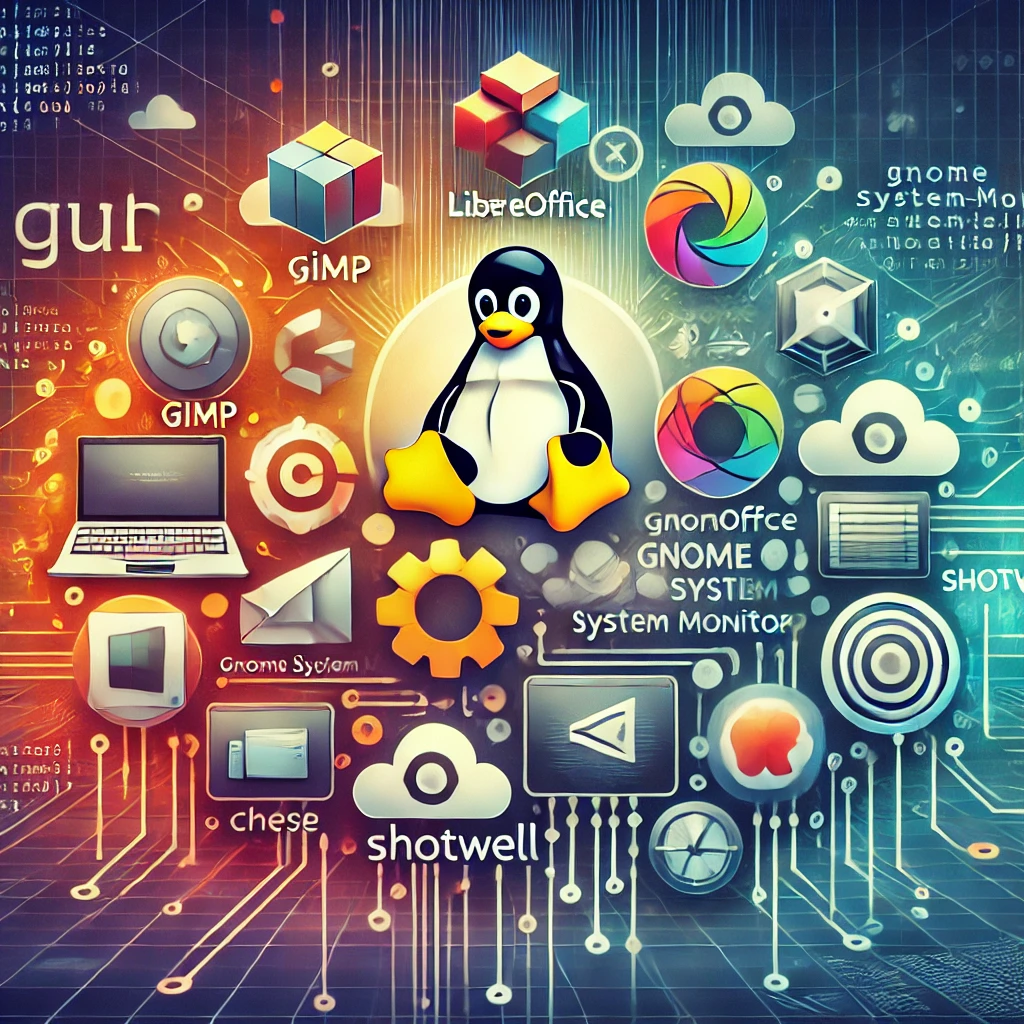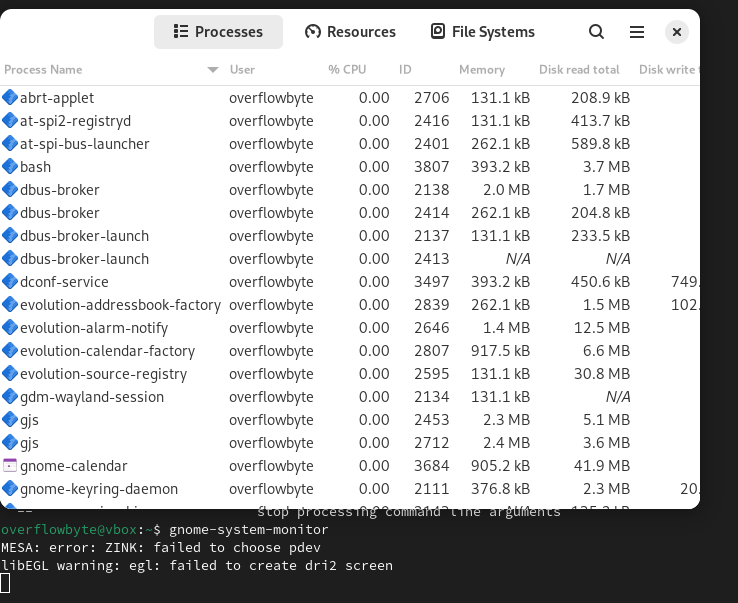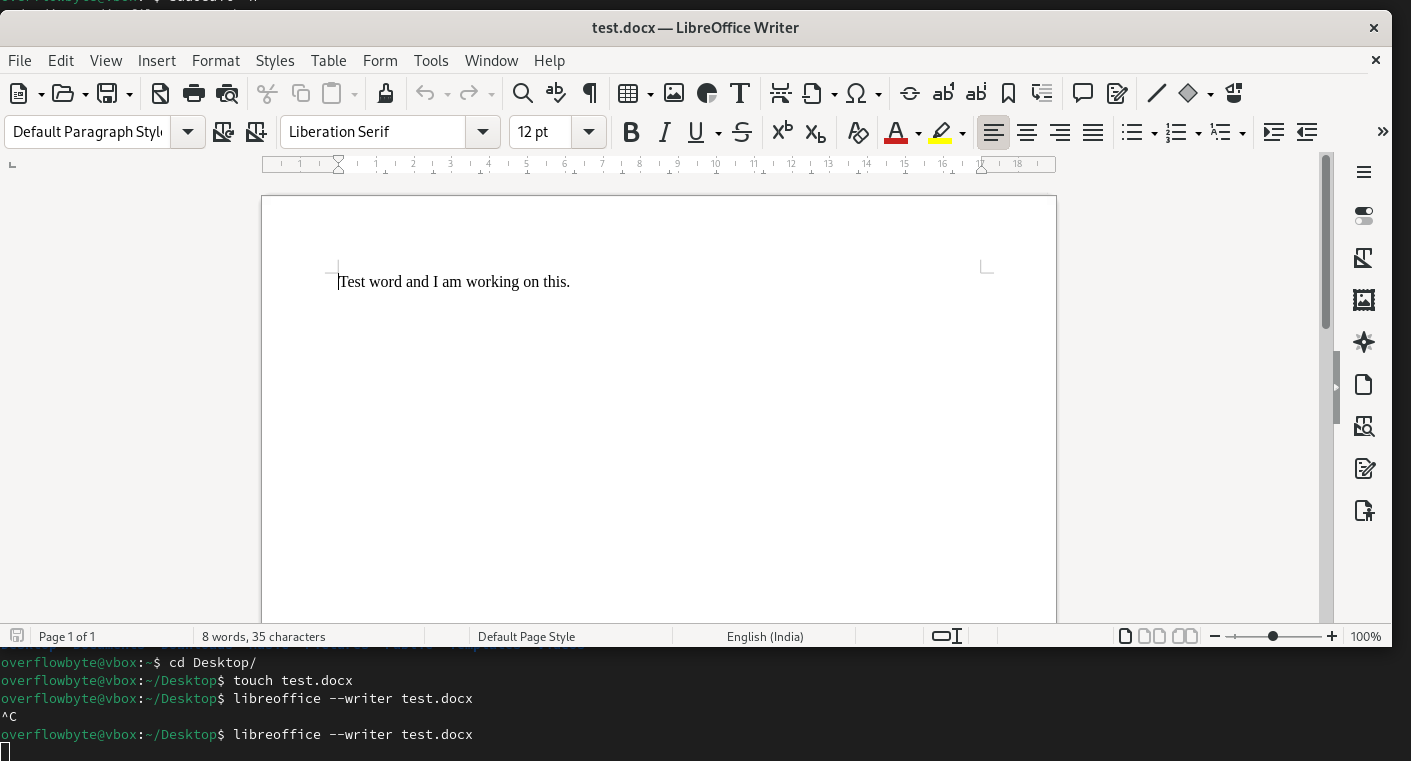Discovering the Power Behind Popular Linux GUI Applications
 Pushpendra B
Pushpendra B
Linux is renowned for its versatility and its ability to run a wide variety of GUI applications. While these programs offer user-friendly interfaces, they are often driven by powerful command-line tools. In this post, we’ll explore five popular GUI applications in Linux and the commands that work behind the scenes.
1. GIMP (Image Editor)
Overview
GIMP (GNU Image Manipulation Program) is a powerful, open-source image editing tool that rivals paid options like Adobe Photoshop. It is widely used for tasks ranging from simple image retouching to advanced image composition.
Command Behind It
To launch GIMP from the terminal, you can use:
gimp
If you want to open a specific image file with GIMP, you can include the file path:
gimp /path/to/image.png
Underlying Command
GIMP uses various command-line tools for image manipulation, such as convert from the ImageMagick suite for format conversion and jpegoptim for JPEG optimization. These commands allow GIMP to perform tasks like resizing, format conversion, and optimization behind the scenes.
2. GNOME System Monitor (System Resource Monitor)
Overview
The GNOME System Monitor provides a graphical interface for viewing and managing system processes and resources like CPU, memory, and network usage. It’s essentially a graphical front-end for monitoring system health.
Command Behind It
To open the GNOME System Monitor, you can run:
gnome-system-monitor

Underlying Command
Behind the scenes, GNOME System Monitor runs commands like top, ps, and free. These commands provide information on system processes, memory usage, and CPU activity. For instance, top shows real-time system resource usage, and ps lists all running processes.
3. LibreOffice (Office Suite)
Overview
LibreOffice is a comprehensive, open-source office suite, offering tools for word processing, spreadsheets, presentations, and more. It's an excellent alternative to Microsoft Office and is widely used in Linux environments.
Command Behind It
To open LibreOffice from the command line, you can use:
libreoffice
For specific modules, such as opening a Word document or a spreadsheet, you can specify the application:
libreoffice --writer /path/to/document.docx
libreoffice --calc /path/to/spreadsheet.xlsx

Underlying Command
LibreOffice can be used in conjunction with command-line tools like pdftotext for converting PDFs into text and unoconv for converting documents between formats like DOCX, ODT, and PDF. This command-line flexibility makes LibreOffice ideal for automated document processing tasks.
4. Cheese (Camera Application)
Overview
Cheese is a camera application for Linux that allows users to capture photos and record videos using their webcam. It's commonly used for quick snapshots, webcam testing, and video recordings.
Command Behind It
To open Cheese and start capturing video or images, use:
cheese
Underlying Command
Cheese uses v4l2-ctl, a command-line utility for controlling video devices, to access and configure the webcam. It also works with ffmpeg for video encoding and mplayer for playback of captured media.
5. Shotwell (Photo Manager)
Overview
Shotwell is a popular photo manager for Linux, enabling users to organize, view, and edit their photo collections. It's lightweight and integrates well with other GNOME applications.
Command Behind It
To open Shotwell, simply type:
shotwell
If you want to import specific photos directly from the command line, you can specify the directory or file path:
shotwell /path/to/photo_directory
Underlying Command
Shotwell utilizes exiv2 for reading and modifying image metadata (such as EXIF data) and can work alongside gphoto2, a command-line tool for managing digital cameras, to import images directly from cameras connected via USB.
Conclusion
Understanding the command-line tools behind popular Linux GUI applications provides deeper insight into how these programs function. It also empowers you to troubleshoot or enhance your workflow by combining the ease of GUI with the power of the Linux command line. Whether you're editing images, managing system resources, or organizing your photos, knowing the commands that power these applications can help you become more efficient and informed.
Feel free to share your thoughts or additional examples in the comments!
Subscribe to my newsletter
Read articles from Pushpendra B directly inside your inbox. Subscribe to the newsletter, and don't miss out.
Written by

Pushpendra B
Pushpendra B
I am a cloud enthusiast and a full time system administrator with passion for designing robust and efficient cloud architectures to empower businesses. As an AWS Certified Cloud Practitioner, I leverage my skills in Windows Server, DNS, Kubernetes, ECS, Route53, Docker, Ansible, KubeFlow, and Linux to create innovative solutions. I'm constantly expanding my knowledge, currently delving into MSSQL and Kubernetes, and staying updated on the latest cloud trends.